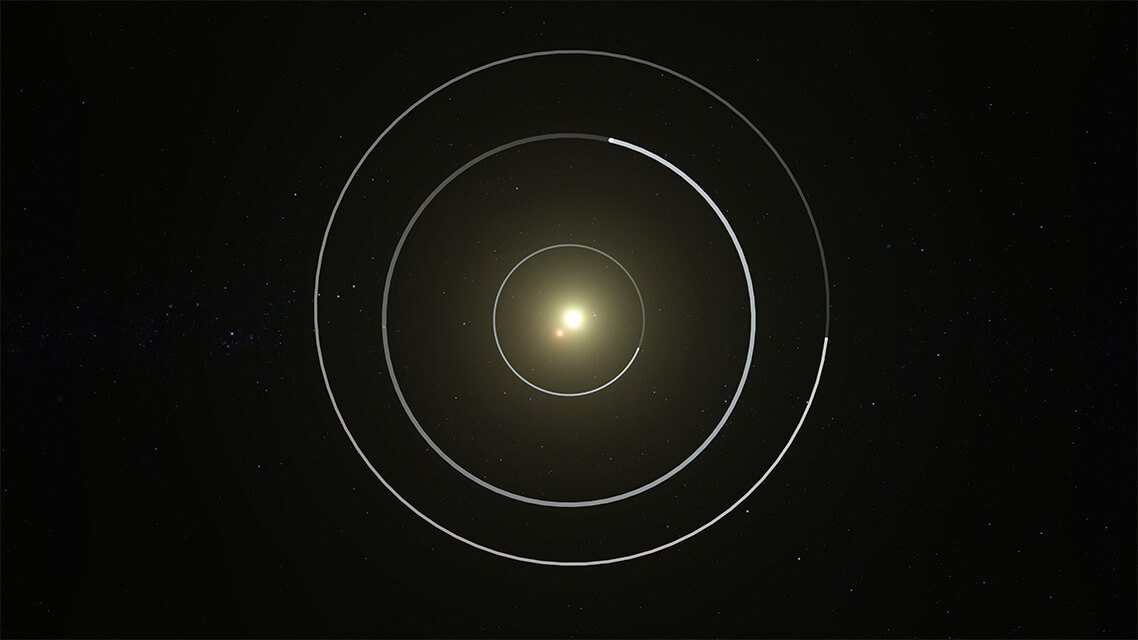Repeated data analysis of the NASA’s Kepler space telescope, which completed the scientific career, led to the discovery of the third exoplanet in the Kepler-47 star system, which provided it with the title of the most interesting among all two stars.
The Kepler-47 dual system is unique among all of its peers, since it only has more than one planet discovered.
The Kepler-47 system is located at a distance of about 3340 light years from Earth in the direction of the constellation Cygnus. It consists of a sun-like star and its companion, which is three times lighter and much weaker than our Sun. Members of the system are separated by only 12 million kilometers, and they make one revolution around a common center of mass for 7.45 Earth days.
In 2012, it was announced the discovery of two exoplanets Kepler-47b and Kepler-47s in the system by the transit method, with the outer one located in the habitable zone. The one that is closer to the stars exceeds the size of the Earth by 3.1 times, and the most distant by 4.7 times. One turn around a pair of luminaries they make for 29 and 303 earth days, respectively. In the same year, another extremely weak transit was seen in the Kepler data, but then this signal did not allow us to say that its cause is the third planet.
It is known that in such systems the orbital planes of the planets change with time. In this case, the orbit of a previously undetected planet has leveled off successfully. This led to an increase in its transit signal so much that it became the deepest among all in Kepler-47.
Comparing the new transit with what was seen in 2012, the team was able to calculate the orbital period of the newly discovered world and identify additional transits in the Kepler data that had previously been hidden in the noise.
The exoplanet discovered was designated Kepler-47d. To astronomers’ surprise, it is located not before or after, but between two previously discovered Kepler-47b and Kepler-47c. In addition, Kepler-47d, having a size of 7 earth, is the largest in this family. It makes one turn around the stars in 187 Earth days.
The discovery of the third planet gave astronomers the opportunity to study the system in much more detail. For example, they found out that all the worlds in Kepler-47 have a very low density, less than that of Saturn, which among all the planets of the Solar System is the most bloated.
Our research confirms one of the most interesting discoveries of Kepler: systems with densely packed planets with low densities are extremely common in our Galaxy. The Kepler-47 family once again showed us that whatever process the planets form in it, it is common to systems of one or more stars.
Kepler-47 dual star system with now three planets
Click To Tweet
The post Kepler-47 dual star system with now three planets appeared first on Upcosmos.com.
